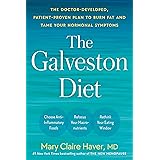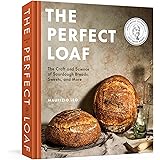For those navigating the world of health and wellness, the concept of an alkaline diet often surfaces as a pathway to improved vitality. The human body naturally maintains a delicate pH balance within a narrow range, typically between 7.35 and 7.45 in the blood, striving for optimal function. However, factors ranging from stress and environmental toxins to immune system responses and, significantly, our dietary choices, can tip this balance towards acidity, which is thought by many health enthusiasts to contribute to various ailments.
The core philosophy behind alkaline eating, as introduced in the insightful video above, centers on consuming foods that, upon digestion, leave an alkaline “ash” in the body, helping to counteract acidic loads. This approach prioritizes fresh fruits, vegetables, and certain grains, aiming to support the body’s natural pH regulation processes. It’s not about drastically changing your blood pH – which your body rigorously controls – but rather reducing the burden on your internal buffering systems, allowing them to operate more efficiently.
Understanding the Alkaline Diet: Beyond the Basics
While the video provides a fantastic overview, delving a little deeper into the science behind the alkaline diet reveals more nuances. The theory posits that the foods we eat are metabolized into either acidic or alkaline byproducts. For instance, many processed foods, meats, dairy, and sugary items are considered acid-forming, whereas most vegetables, fruits, and certain seeds are alkaline-forming. The goal is to create a net alkaline effect, which proponents believe can reduce inflammation, boost energy levels, and even slow the aging process.
It is important to understand that the “pH” discussed in the alkaline diet context often refers to the potential renal acid load (PRAL) of foods, which measures how much acid or base the food produces after metabolism in the kidneys. Foods with a positive PRAL contribute to acid load, while those with a negative PRAL are alkaline-forming. This distinction helps clarify why certain acidic-tasting foods, like lemons and limes, are actually alkaline-forming once digested, as Rachel Ama expertly highlights in her culinary demonstrations.
The Dr. Sebi Connection: Electric Foods for Optimal Health
Rachel Ama also touches upon the influential work of Dr. Sebi, a self-proclaimed healer who advocated for a specific list of “electric foods” to achieve cellular regeneration and overall health. Dr. Sebi’s nutritional guide, rooted in an alkaline vegan framework, emphasizes foods that are natural, organic, and free from hybridization. He believed that consuming these naturally occurring, nutrient-dense foods could combat disease and promote holistic well-being.
While Dr. Sebi’s theories are often debated in mainstream science, his emphasis on whole, unprocessed, plant-based foods aligns strongly with general health recommendations. His influence encourages a deeper consideration of food quality and origin, prompting individuals to seek out organic, non-GMO produce for maximum nutritional benefit. This commitment to ‘clean’ eating forms a strong foundation for an alkaline diet, prioritizing ingredients that support the body’s innate healing capacities.
Alkaline-Rich Ingredients: Your Kitchen Essentials
Building an alkaline pantry is simpler than it sounds, often involving staples already familiar to health-conscious eaters. The video showcases several powerhouse ingredients that are not only delicious but also highly beneficial for maintaining an alkaline balance. These foods are packed with vitamins, minerals, and antioxidants, making them essential for vibrant health.
Take, for instance, kale, a leafy green renowned for its dense nutritional profile. It’s a fantastic source of vitamins K, A, and C, as well as crucial minerals, making it a cornerstone of many alkaline recipes. Similarly, butternut squash, a star in the featured meal, offers a remarkable contribution to daily nutrient needs, providing up to 50% of your recommended daily amount of vitamin C and abundant vitamin A, which supports immune function and vision. Quinoa, often lauded as a “supergrain,” delivers all nine essential amino acids, making it a complete protein source, alongside ample fiber vital for digestive health.
Crafting Delightful Alkaline Recipes: Meal and Juice Ideas
Rachel Ama brilliantly demonstrates how to transform these nutrient-rich ingredients into satisfying and simple alkaline recipes. Her approach to cooking is not only practical but also deeply mindful of maximizing nutrient absorption and supporting digestion. The roasted butternut squash, prepared without oil during roasting to preserve nutrient integrity, exemplifies this thoughtful method, allowing the vegetable’s natural sweetness to shine.
The vibrant kale, apple, avocado, and quinoa salad further illustrates the power of combining fresh, alkaline-forming ingredients. Massaging the kale with a lime and olive oil dressing not only tenderizes it but also enhances nutrient bioavailability, making it easier for your body to absorb its benefits. Hemp seeds, an often-overlooked addition, are alkaline and provide a significant boost of protein and healthy fats, contributing to a balanced meal. The simple green juice, packed with celery, ginger, parsley, kale, apples, and lime, offers a concentrated dose of alkalizing nutrients, perfect for starting your day or as a refreshing pick-me-up.
Enhancing Your Alkaline Lifestyle: Practical Tips and Benefits
Embracing an alkaline diet extends beyond simply choosing the right foods; it involves thoughtful preparation and mindful consumption. As the video emphasizes, opting for organic, non-GMO produce is paramount, as these foods often contain higher concentrations of beneficial nutrients and fewer synthetic chemicals that can contribute to the body’s acidic load. Sourcing high-quality extra virgin olive oil, as recommended for dressings, ensures you’re gaining maximum health benefits from healthy fats.
Furthermore, simple practices like thoroughly rinsing quinoa before cooking help remove saponins, naturally occurring compounds that can sometimes lead to digestive discomfort. Reusing butternut squash seeds, as suggested, not only reduces food waste but also provides a nutritious snack or salad topping. Incorporating these simple alkaline recipes and habits into your routine can lead to increased energy, improved digestion, clearer skin, and an overall sense of enhanced well-being, paving the way for a more vibrant and healthy lifestyle.











